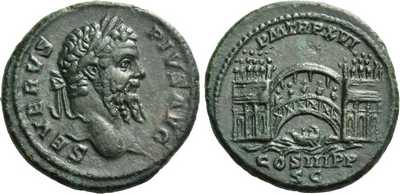| Back to Constans | This is the last page of the article Roman Coins About Britain |
Recommended Reading
Roman Coins
The following books are obviously very useful for this topic, although they are expensive:
- “Roman Imperial Coinage Volume I: Augustus to Vitellius”
- “Roman Imperial Coinage Volume II: Vespasian to Hadrian”
- “Roman Imperial Coinage Volume III: Antoninus Pius To Commodus”
- “Roman Imperial Coinage Volume IV: Pertinax to Uranius Antoninus”
- “Roman Imperial Coinage Volume V (Part B) Marcus Aurelius Probus to Maximian”
- “Roman Imperial Coinage Volume VI: The Diocletian Reform - Maximinus II”
- “Roman Imperial Coinage Volume VII: Constantine I to Licinius”
Most of the catalogue information is now available on the “Online Coins of the Roman Empire” site, although all of the supporting text is missing and there are a small number of mistakes that mean the original books are invaluable.
Roman Coins About Britain
I found the following books on British Roman coins useful while researching this article:
- “The Coinage of Roman Britain” by Gilbert Askew
- “Coins of the Romans Relating to Britain” by John Yonge Akerman
- “A History of Roman Coinage in Britain: Illustrated by finds recorded with the Portable Antiquities Scheme” by Sam Moorhead
Gilbert Askew’s book is probably the best one for Roman coins about Britain. Sam Moorhead’s book is more about Roman coins found in Britain, although it’s worth a read.
Britannia
Lajos Juhasz’s paper “Britannia on Roman coins” is worth reading if you want to know more about Britannia. Everything else I found on this topic was superficial, and not worth recommending.
The 208-211 AD Campaigns by Septimius Severus, Caracalla, and Geta
For information on the 208-211 AD campaigns in Britain, I’d suggest reading these:
- “The Scottish Campaigns of Septimius Severus” by Nicholas Reed
- “Septimius Severus in Scotland: The Northern Campaigns of the First Hammer of the Scots” by Simon Elliott
Reed has some controversial views on the campaign which many people, including Elliott, have tried to discredit, but I don’t consider any of them to have succeeded in doing so. Elliott’s book is excellent until it gets to the timeline of the actual campaigns, where it falls down a bit in its attempt to be different from Reed. His case for an alternate timeline isn’t well made, and seems overly contrived. I’d still recommend it though.
I spent quite a long time trying to disprove Reed’s timeline, and haven’t managed to find any hard evidence that actually does so (I would be very grateful if you could contact me if you know of such evidence). I should note that if you do read Reed’s paper, then his interpretation of the imperial rescripts is wrong, and can be completely discounted. Some of his numismatic details are also incorrect, as waspishly pointed out by Anne Robertson (“Bridges on Severan coins of A.D. 208 and 209”, 1980), but the corrections don’t invalidate his conclusions.
General
Finally, I found “The Roman Invasion of Britain: Archaeology versus History” by Birgitta Hoffmann an excellent book on the history of Roman activity in Britain. What’s particularly refreshing is that the author relies on archaeological evidence rather than the unreliable historical sources, and some of the shaky theories that have taken hold over the years.
Collecting Practicalities
I was going to finish off with some ideas about possible collecting themes, but it doesn’t take long to find out that they are almost all impossible to complete. There are just too many unique coins in key positions.
Want to collect each reverse type from each emperor? Antoninus Pius, Septimius Severus, Caracalla, Victorinus, Carausius, Allectus, Constantius Chlorus, and Constans all have at least one reverse type that’s on a unique coin.
In that case, what about just one coin from each emperor? Victorinus, Constantius Chlorus, and Constans solely consist of unique coins, although you can get electrotype copies of Constantius Chlorus’ coins if that’s of interest to you. You can complete this theme if you are happy to stop with Septimius Severus, Caracalla and Geta.
One of every Britannia? One of Antoninus Pius’ Britannia’s is unique and in the British Museum, and if you accept that it’s Britannia that appears on three of Constantius Chlorus’ Arras Medallions, then you have three more unique coins to worry about. Carausius’ Britannia coins may also prove to be a challenge.
Rarity aside, some of the coins are very expensive (for example, the aurei and Hadrian’s sestertii and dupondii).
My only advice is to pick the coins you are interested in and then try and find examples of them selling in the last 5 years to gauge your chance of completing your collection.
My Collecting Theme
Just for interest, and as an excuse to end on pretty coins, here’s what I’d like my Roman Coins About Britain collection to eventually look like. Good luck with your collection!
Photo Copyright Numismatica Ars Classica NAC AG Auction 100 lot 1756. Sold for 5,500 CHF + fees
Photo Copyright Roma Numismatics Ltd. Auction XVIII, Lot 1124. £550 + fees
Photo Copyright Classical Numismatic Group, LLC. Triton XIV lot 713. $5,500 + fees (you can get them for a lot less though)
Photo Copyright Classical Numismatic Group, LLC. Triton XIV Lot 726. Sold for $950 +fees
Photo Copyright Dix Noonan Webb Ltd. 15th Feb 2017 Lot 134. Sold for £600+fees
Photo Copyright Numismatica Ars Classica NAC AG Auction 106 Part I, Lot 991. Sold for 12,000 CHF + fees
Photo Copyright Classical Numismatic Group, LLC. Sold on the coin shop for $395
Photo Copyright Classical Numismatic Group, LLC. Auction 72 lot 1575. Sold for $300 + fees
Article Navigation
| Back to Constans | Up to Roman Coins About Britain |








